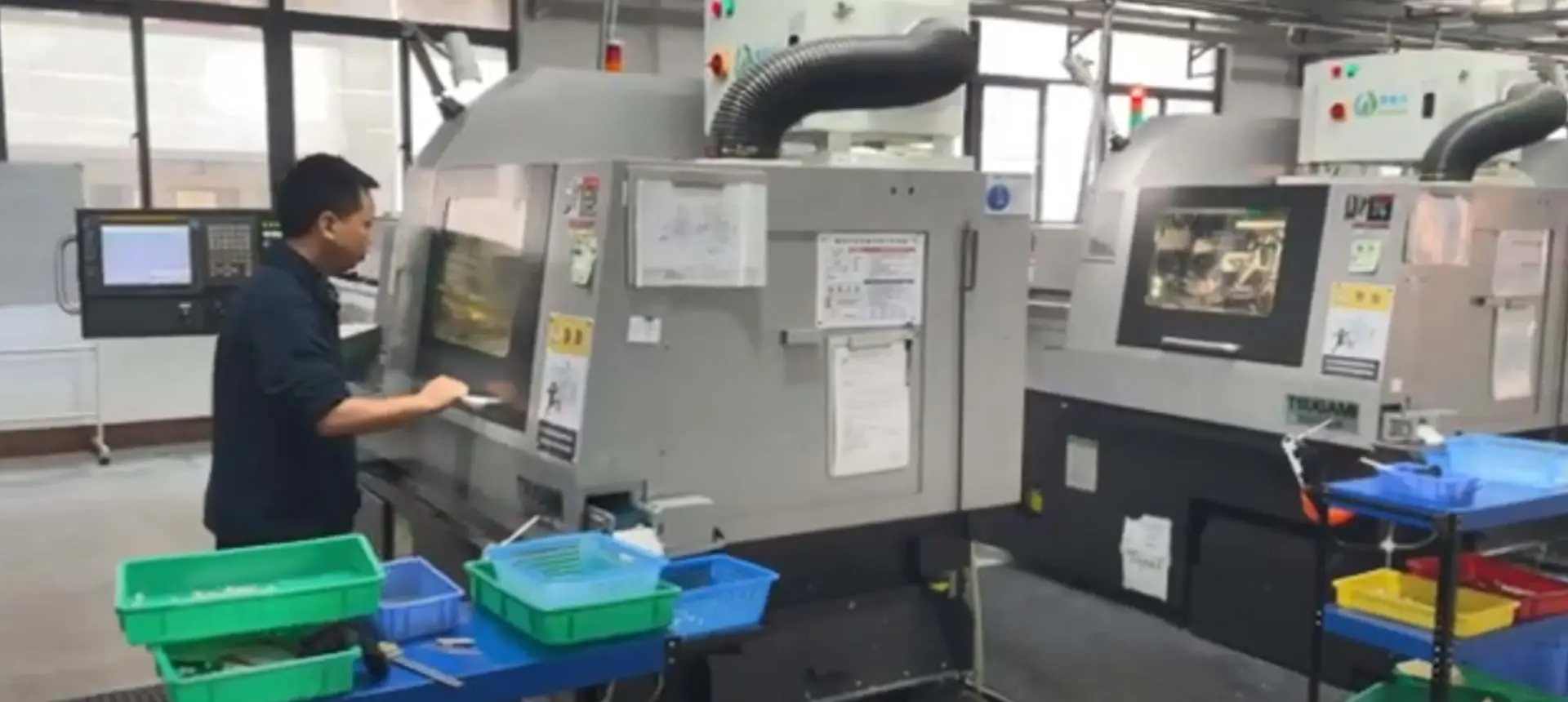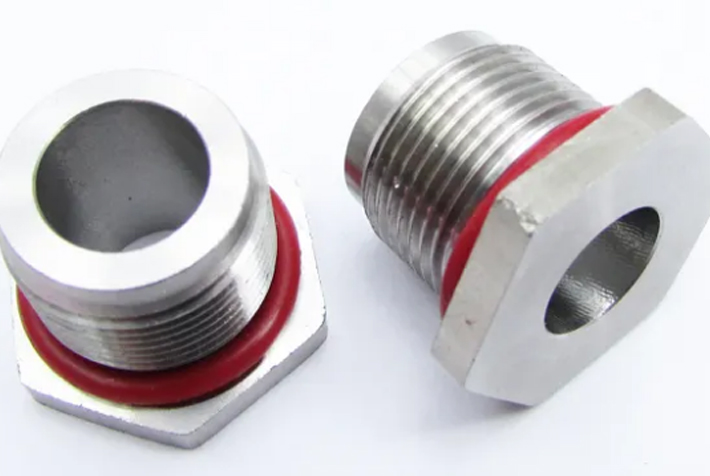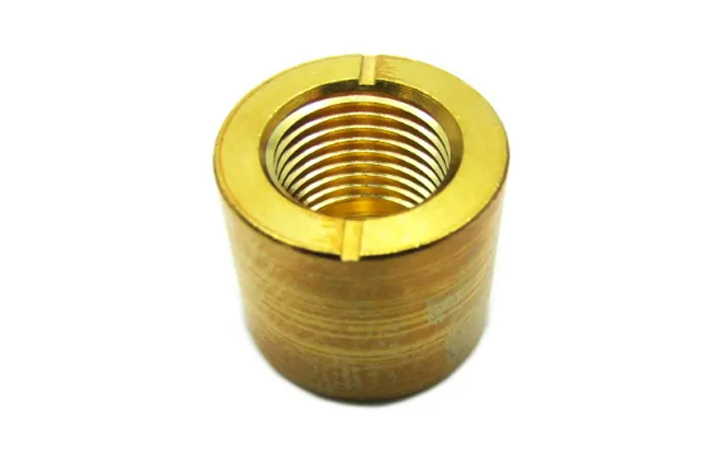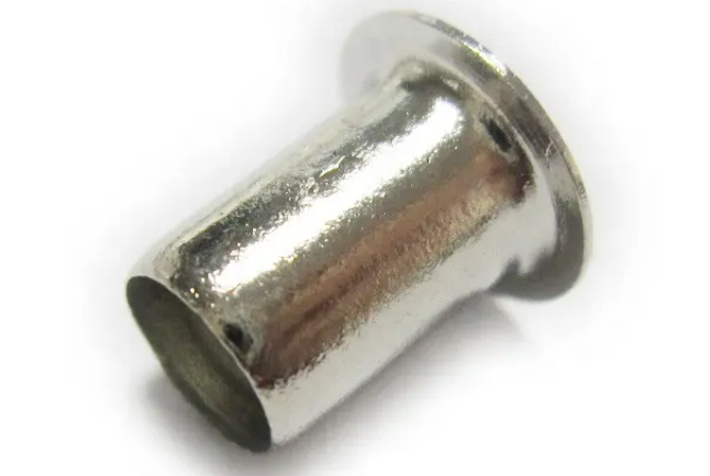
Pemeriksaan bahan: proses kawalan kualiti bermula dengan pemeriksaan bahan mentah yang masuk. Bahan-bahan yang digunakan untuk bushings/lengan hendaklah memenuhi piawaian dan keperluan yang ditetapkan. Kaedah ujian bahan mungkin termasuk analisis komposisi kimia, ujian kekerasan, dan pengesahan dimensi.
Ketepatan dimensi: Bushings/sleeves mesti mempunyai dimensi yang tepat untuk memastikan kesesuaian dan fungsi yang betul. Langkah-langkah kawalan kualiti melibatkan pemeriksaan dimensi menggunakan alat dan peralatan yang dikalibrasi, seperti calipers, mikrometer, dan tolok, untuk mengesahkan diameter dalaman dan luaran, panjang, dan ketebalan dinding.
Kualiti permukaan: kemasan permukaan bushings/lengan adalah penting untuk operasi lancar dan mengurangkan geseran. Pemeriksaan kawalan kualiti melibatkan pemeriksaan visual permukaan untuk kecacatan seperti burr, calar, atau penyelewengan. Pengukuran kekasaran permukaan juga boleh dilakukan menggunakan alat seperti profilmeters.
Pengesahan toleransi: Bushings/lengan mempunyai had terima tertentu yang menentukan variasi yang boleh diterima dalam dimensi. Prosedur kawalan kualiti melibatkan memeriksa komponen yang dihasilkan terhadap toleransi ini untuk memastikan mereka jatuh dalam had yang ditetapkan.
Sifat-sifat mekanikal: bergantung kepada keperluan permohonan, sifat-sifat mekanikal tertentu bushings/lengan, seperti kekerasan, kekuatan tegangan dan elongation, perlu dinilai. Sifat-sifat ini boleh dinilai melalui kaedah ujian standard, termasuk ujian kekerasan (contohnya, Rockwell atau Brinell) dan ujian tegangan.
Bahan | Besi, keluli tahan karat, tembaga, tembaga, keluli tergalvani, titanium, Aluminium, dll. |
Rawatan permukaan | Zink/nikel/timah/Ag-Plated/Au-Plated, dll. |
Jenis | Bahagian-bahagian alatan yang tidak standard kepersisan tinggi (Perkhidmatan OEM) |
Proses | Stamping/menumbuk/menekan, pemesinan CNC/berpaling/penggilingan, lukisan dalam dan proses lain. |
Sijil | IATF16949 2016;I SO9001 2015; ISO14001:2015;RoHS & REACH, dll. |
Penggunaan | Termostat automotif/kereta, suis, pemanasan elektrik, aeroangkasa, tenaga baru, dll. |
Bushings, juga dikenali sebagai lengan, adalah komponen silinder yang digunakan dalam pelbagai aplikasi untuk memberikan sokongan, mengurangkan geseran, dan menyerap kejutan atau getaran. Ciri-ciri produk khusus bushings/lengan boleh berbeza-beza bergantung kepada penggunaan yang dimaksudkan dan bahan-bahan yang mereka dibuat dari.
Pakai rintangan:Bushings/lengan mungkin mempunyai ciri-ciri tertentu untuk meningkatkan rintangan haus mereka, terutamanya dalam aplikasi beban tinggi atau berkelajuan tinggi. Ciri-ciri ini boleh termasuk lapisan permukaan khas, rawatan haba, atau penggunaan bahan dengan sifat tahan haus yang wujud.
Penyerapan kelembapan dan kejutan:Sesetengah bushings/lengan direka untuk menyerap kejutan atau getaran, mengurangkan penghantaran daya impak. Mereka mungkin mempunyai sifat-sifat seperti keanjalan yang tinggi, fleksibiliti, atau keupayaan untuk berubah di bawah beban, menyediakan ciri-ciri damping.
Rintangan kakisan:Bergantung kepada aplikasi dan persekitaran operasi, bushings/lengan mungkin memerlukan sifat tahan kakisan. Ini amat penting apabila terdedah kepada kelembapan, bahan kimia, atau suhu yang melampau. Memilih bahan yang sesuai atau memohon salutan pelindung boleh meningkatkan rintangan kakisan bushings.
Ciri-ciri khusus permohonan:Sesetengah bushings/lengan mungkin mempunyai ciri-ciri tambahan yang khusus untuk aplikasi tertentu. Sebagai contoh, bushings flanged mempunyai flange terbina dalam yang menyediakan kestabilan tambahan atau titik pelekap.
Apabila memilih bushings/lengan, pertimbangkan keperluan khusus permohonan anda, seperti kapasiti beban, kelajuan, keadaan operasi, dan faktor persekitaran. Memahami ciri-ciri produk dan kesesuaian mereka untuk kegunaan anda akan membantu memastikan prestasi optimum dan panjang umur.
Bushings adalah komponen silinder mudah yang direka untuk mengurangkan geseran antara aci dan struktur luaran, memberikan sokongan dan bimbingan. Biasanya terdapat dalam perabot, sistem penggantungan automotif, dan lain-lain, mereka direka untuk kesederhanaan dan boleh menjadi pepejal atau ciri alur pelinciran terbina dalam untuk mengurangkan geseran dan meningkatkan ketahanan.

Galas, di sisi lain, adalah komponen mekanikal yang lebih kompleks dengan unsur-unsur rolling seperti bola atau penggelek. Mereka mengurangkan geseran, menawarkan kapasiti beban yang lebih besar, dan memberikan sokongan ketepatan tinggi. Digunakan secara meluas dalam enjin, motor, gandar roda, dan lain-lain, galas datang dalam pelbagai reka bentuk untuk memenuhi permintaan aplikasi berkelajuan tinggi dan tinggi. Sebagai pembekal pembuatan perkakasan, HHC didedikasikan untuk menyampaikan bushings dan galas berkualiti tinggi untuk memenuhi keperluan reka bentuk dan aplikasi yang pelbagai di seluruh industri yang berbeza, menyumbang kepada pembangunan dalam pelbagai bidang.
Sesendal yang merupakan komponen kritikal yang mengurangkan geseran antara aci dan struktur luaran, dan prestasinya ditentukan oleh bahan-bahan yang dipilih. Berikut adalah panduan mengenai jenis bahan sesendal dan teknik pemprosesan yang sesuai untuk setiap:

Tembaga:
Ciri-ciri: ExhIbits kekonduksian terma yang baik dan rintangan kakisan.
Teknik pemprosesan: tembaga biasanya diproses menggunakan teknik mekanikal seperti beralih, penggilingan, dan penggerudian untuk mencapai bentuk dan dimensi yang dikehendaki.
Gangsa:
Ciri-ciri: mempunyai kekerasan yang lebih tinggi dan rintangan haus.
Teknik pemprosesan: gangsa sering diproses melalui pemutus ketepatan, penyemperitan sejuk, atau teknik lain untuk mengeluarkan bushings berbentuk kompleks.
Polimer:
Ciri-ciri: dikenali untuk pelinciran diri dan rintangan kakisan.
Teknik pemprosesan: bushings polimer biasanya dihasilkan menggunakan pengacuan suntikan, di mana polimer lebur disuntik ke dalam acuan untuk membentuk bentuk yang dikehendaki.

Lapisan logam:
Ciri-ciri: menyediakan rintangan haus dan kekuatan yang unggul.
Teknik pemprosesan: bushings keluli sering dilapisi menggunakan proses seperti galvanizing panas atau penyaduran untuk mencapai salutan logam pelindung di permukaan.


